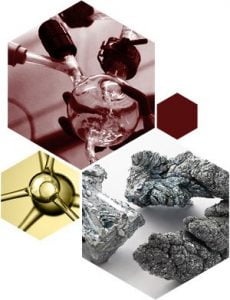
Silicon (IV) Acetate, anhydrous
Properties
- We can offer items in bulk or custom. For other quantities or purities, please request a quotation.
- All prices are subject to change.
Information about Silicon (IV) Acetate, anhydrous / CAS 562-90-3
Silicon (IV) Acetate, anhydrous (Si(OOCCH3)4) is a Silicon-based compound utilized in a wide range of advanced material syntheses and applications. It is a colorless, moisture-sensitive solid that readily hydrolyzes to form Silicon Dioxide, making it a valuable precursor in sol-gel processing and silica film deposition. Due to its reactivity and volatility, it is especially useful in applications where controlled deposition of Silicon-containing materials is required, such as in thin-film coatings, nanostructured materials, and precision surface treatments. Researchers and engineers leverage its ability to form high-purity Silicon-Oxygen frameworks to develop components for optical, electronic, and biomedical systems. Its unique structural and chemical behavior has made it a material of interest not only in academic laboratories but also in pilot-scale processes targeting high-value applications such as microelectronics, biocompatible devices, and sustainable ceramics. Its reactivity and properties make it valuable in materials science, organic synthesis, and biomedical research.
In materials science, Silicon (IV) Acetate serves as a research precursor for Silicon-based materials, with potential applications in optical coatings and high-strength ceramics. Studies on hypercoordinated silicon anions have demonstrated the ability of Silicon compounds to form stable molecular structures, enhancing their mechanical and optical properties. Silicon (IV) Acetate forms silica-based films and coatings with extensive utility and applications in advanced manufacturing and electronics. Research into sustainable synthesis methods for Silicon precursors has aimed to make Silicon-based compounds more environmentally friendly while maintaining high purity and structural integrity.
In organic synthesis, Silicon (IV) Acetate is a valuable reagent. Organofluorosilicates and other hypercoordinated Silicon compounds have been studied for their role in activating Carbon-Silicon bonds, enabling highly selective chemical transformations. These findings have potential applications in pharmaceuticals, advanced polymer chemistry, and specialty coatings. The unique coordination properties of Silicon (IV) compounds contribute to their increasing use in synthetic methodologies requiring precise control over reactivity.
- Vioux A., Hubert Mutin P. Nonhydrolytic Sol-Gel Technology. In: Klein L., Aparicio M., Jitianu A. (eds) Handbook of Sol-Gel Science and Technology. Springer, Cham.2018, pp 1039-1065, https://doi.org/10.1007/978-3-319-32101-1_28
- Szurkowska, K., & Kolmas, J. (2017). Hydroxyapatites enriched in silicon–Bioceramic materials for biomedical and pharmaceutical applications. Progress in Natural Science: Materials International, 27(4), 401-409.
- Chaudhry, A. A., Knowles, J. C., Rehman, I., & Darr, J. A. (2013). Rapid hydrothermal flow synthesis and characterisation of carbonate-and silicate-substituted calcium phosphates. Journal of Biomaterials Applications, 28(3), 448-461.
Safety
- H314 Causes severe skin burns and eye damage.
- P260 Do not breathe dust/fume/gas/mist/vapours/spray.
- P264 Wash skin thoroughly after handling.
- P280 Wear protective gloves/protective clothing/eye protection/face protection.
- P301+P330+P331 IF SWALLOWED: Rinse mouth. Do NOT induce vomiting.
- P303+P361+P353 IF ON SKIN (or hair): Remove/Take off Immediately all contaminated clothing. Rinse SKIN with water/shower.
- P304+P340 IF INHALED: Remove victim to fresh air and Keep at rest in a position comfortable for breathing.
- P305+P351+P338 IF IN EYES: Rinse cautiously with water for several minutes. Remove contact lenses, if present and easy to do. Continue rinsing.


